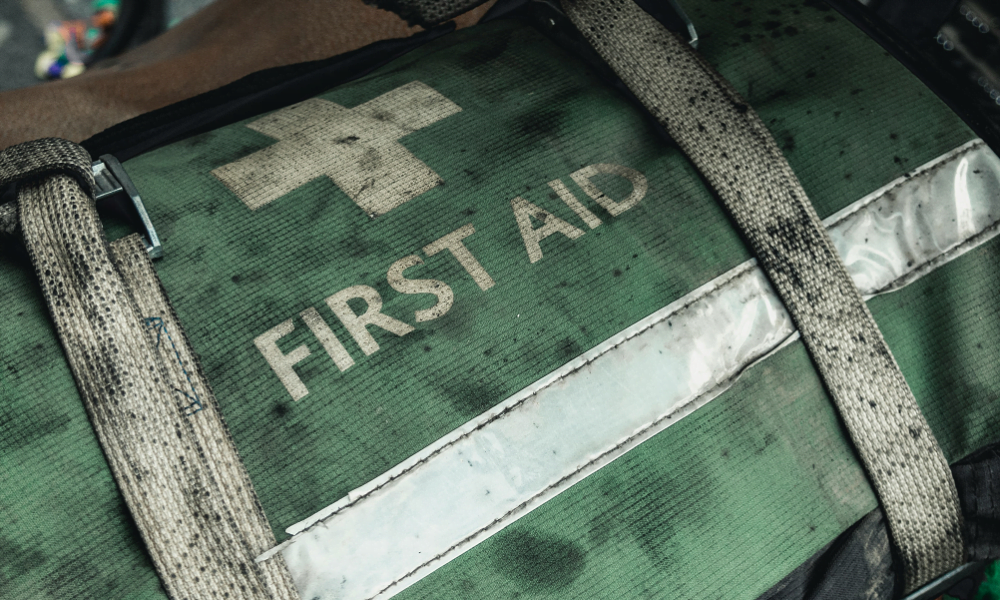Lone worker emergency 999 procedures
This Trackplot Guide outlines what to do if you are a lone worker in an emergency 999 situation.

Most of us have watched many emergency 999 scenes in films and tv programmes and take for granted that we know what to do in a crisis. Often however either panic can take hold or a person can drastically underestimate the severity of an incident particularly if they are injured and in shock. These reactions can be compounded if the person concerned is also a lone worker with no one around to help. Pre-empting an emergency scenario considering procedures, the actions to take and providing clear direction to lone workers could save a life.
I’m a lone worker. What do I do if I need emergency help?
-
First establish if you have good mobile phone reception. If you do – dial 999 straight away.
This is the easiest and quickest way to be connected to the Emergency Services.
You can use this from anywhere in the UK and you can use a landline or mobile phone. Do NOT switch off your mobile phone to save battery power. Keep it turned on so the Emergency Services can contact you.Read the article: Why satellite communications still have a role to play in the UK. Includes a link to a mobile phone Coverage Checker.
-
If you have hearing or speech impairments
Instead of dialling 999 you can use the textphone service 18000.
-
If you have tried to phone 999 but do not have strong enough mobile phone signal to make a call then send a text to the Emergency Services using the EmergencySMS service.
This service is primarily for deaf, hard of hearing and speech-impaired people to raise the alarm. It can be used by able-bodied persons if the phone reception is not strong enough to make a call.
Please note you need to pre-register to use this service.
-
If you have tried the above steps and don’t have any mobile phone signal at all nor do you have the EmergencySOS service:
- If you carry a GPS Device use the SOS feature to raise the alarm.
- If you do not carry a GPS Device you should:
- Keep your mobile phone switched on. Do NOT turn it off to save battery power. Your provider may be able to triangulate your phone location from your attempted calls.
- Extend the battery life on your phone by turning down the brightness; turn off vibrate; turn off WiFi, Bluetooth and GPS; turn off Data Roaming; turn off Voice Control.
- Keep warm. Put on all your spare layers – don’t wait until you get cold to do this. Preserve the heat you have immediately.
- Determine your position on a map if you have one. Gather as much information as you can to advise the Emergency Services if they do get in touch.
- Check if you’ve received a Personal Severe Weather Notification from Trackplot – this may inform your actions to keep safe.
- Finding shelter: a) Stay in your car if you have one; or b) Is there shelter locally you can reach to stay out of the elements? This could be behind a building, fence, wall, rocks or trees. View the landscape and check your map to determine this.
- Staying put: Will your situation be resolved if you stay where you are? This decision will depend on any injuries you have.
- Apply First Aid. Treat any injuries as best you can without doing any further harm. Check if you are bleeding, stem the bleeding and elevate the injured part if possible.
- Insulate yourself from the ground, sit on your back pack or in a bivy bag if you have one.

I’m responsible for lone workers. What should I do?
Develop your emergency 999 escalation procedures in advance, identify any vulnerable workers, and circulate your procedures with your lone workers and their managers. Make it clear to your lone workers it is never too early to contact the Emergency Services, they prefer to stand down from a less severe situation than to be alerted too late with a life at risk.
Read the article: Do you have an SOS plan?
How Trackplot can help
At Trackplot we provide guidance on your Lone Working Policy, Standard Procedures and Emergency Escalation Procedures. We address the different methods to raise the alarm including both 999 or using SOS functionality. We ensure your lone workers understand what to do in a crisis and that the people responsible know how to handle the emergency.
Trackplot also provides Environmental Mapping including Rapidly Developing Thunder Storms and Met Office Weather Warnings so you can assess the current and forthcoming weather and environmental conditions to anticipate the vulnerability of a lone worker in an emergency situation.
